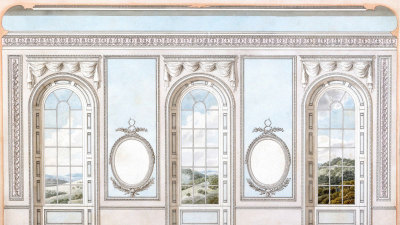Fanny Eaton at the Royal Academy
Fanny Eaton at the Royal Academy
By Annette Wickham
Published 28 October 2022
Get to know Fanny Eaton, a Jamaican woman who became a popular artist’s model in Victorian England and featured in many Pre-Raphaelite masterpieces.
-
If you are not familiar with Fanny Eaton’s name, you might just recognise her face. A favourite of artists including John Everett Millais, Dante Gabriel Rossetti, Rebecca Solomon, Simeon Solomon, and others, you can see her on the walls of museums and galleries across the world. Eaton had an extraordinary life, becoming an influential model at a time when images of idealised beauty in British art typically focussed on whiteness – and Black people routinely faced discrimination.
-

Dalziel brothers after Simeon Solomon, The Infant Moses, 1862.
Wood-engraving. RA Collection © Royal Academy of Arts, London.
-
Early life
Born in 1835 in Surrey, Jamaica (not long after the abolition of slavery in the British empire) it is thought that Eaton’s mother, Matilda Foster, was born into enslavement. Her father was possibly a British soldier, James Entwistle, who was stationed nearby and died not long after Eaton’s birth.
Eaton moved to the UK with her mother in the 1840s and initially worked as a domestic servant – a gruelling occupation with long hours and terrible pay. In 1857 she married, or lived with, a coach driver named James Eaton, and together they had ten children.
-
Artist's model
It was in the late 1850s that Eaton’s career as an artist’s model took off. It is not known exactly how she first took up this work but her income from modelling would have helped to support her growing family. Eaton’s looks particularly appealed to the Pre Raphaelites and artists associated with this movement, and she modelled for various characters including figures from the Bible.
Unfortunately, no letters or writings by Eaton survive to record her thoughts or opinions of her work but we can learn about her life, including her connections with the Royal Academy, through studying historic documents.
-

Walter Fry Stocks, Mrs. Fanny Eaton, 1859.
Black, red, and white chalk on cream wove paper. 43.2 cm x 34.9 cm. Museum purchase, Surdna Fund. Princeton University Art Museum..
-
At the Royal Academy
The first painting that Eaton modelled to be exhibited at the Royal Academy was Simeon Solomon’s The Mother of Moses (above; now in Delaware Art Museum) in 1860. The painting was later reproduced as an engraving The Infant Moses published in 1862. Eaton is shown standing, clasping the infant Moses closely as a younger figure (possibly modelled by one of her daughters) reaches up to touch the baby.
Documents in our Archive also reveal that she occasionally worked as a life model for the RA Schools in the 1860s. ‘Mrs Eaton’ is recorded as completing 3 sittings of 2 hours each as a model in 1860 for which she was paid 15 shillings for each – the standard payment for RA models.
Models were hired for the life class by the Academician who was teaching (known as ‘the Visitor) and for her first sittings Eaton was introduced by Alfred Elmore RA, a painter who was part of a group known as ‘The Clique’ along with William Powell Frith, Augustus Egg, Richard Dadd and others. Eaton seems not to appear in Elmore’s own works, however.
-

Fanny Eaton's name in the 1860 models list from the Royal Academy Archive
Archive reference number: RAA/TRE/3/13 © Royal Academy of Arts, London
-
She appears again in the Academy’s records as a model in 1863 when she undertook five sittings for the ‘Visitor’ Charles Landseer who was standing in for John Everett Millais. It is possible that Millais chose Eaton who went on to model for his painting Jephthah in 1867.
Intriguingly, there is a model named Eaton that appears later on in the 1870s. However, this time, the model is specifically referred to as ‘Miss Eaton’ and she sat for 12 sessions as a draped model in the School of Painting in 1874, introduced by the sculptor Sir John Gilbert, and again in 1875. Eaton’s children may also have found work as models and so this may have been one of Fanny’s daughters modelling at the Academy in the 1870s. Eaton herself stopped modelling around this time and became a seamstress. She moved to the Isle of Wight to work for a family before returning to London to live with one of her daughters.
Life drawing was a crucial part of an artist’s education at the Royal Academy from 1768 until the late 20th century. The RA provided male and female life models for the life class but in the early days only the men’s names were recorded while the women were referred to anonymously to protect their privacy. However, by the mid-19th century the names of both sexes were recorded in a cash book – hence these fascinating records recording Fanny Eaton’s involvement with the Academy.
-

Dalziel brothers after Sir John Everett Millais PRA, The Pearl of Great Price (The Parables of Our Lord and Saviour Jesus Christ), 1864.
Wood-engraving. RA Collection © Royal Academy of Arts, London.
-
Annette Wickham is Curator of Works on Paper at the Royal Academy of Arts
Read more: Article by Jan Marsh Article by Robert Ferrari







